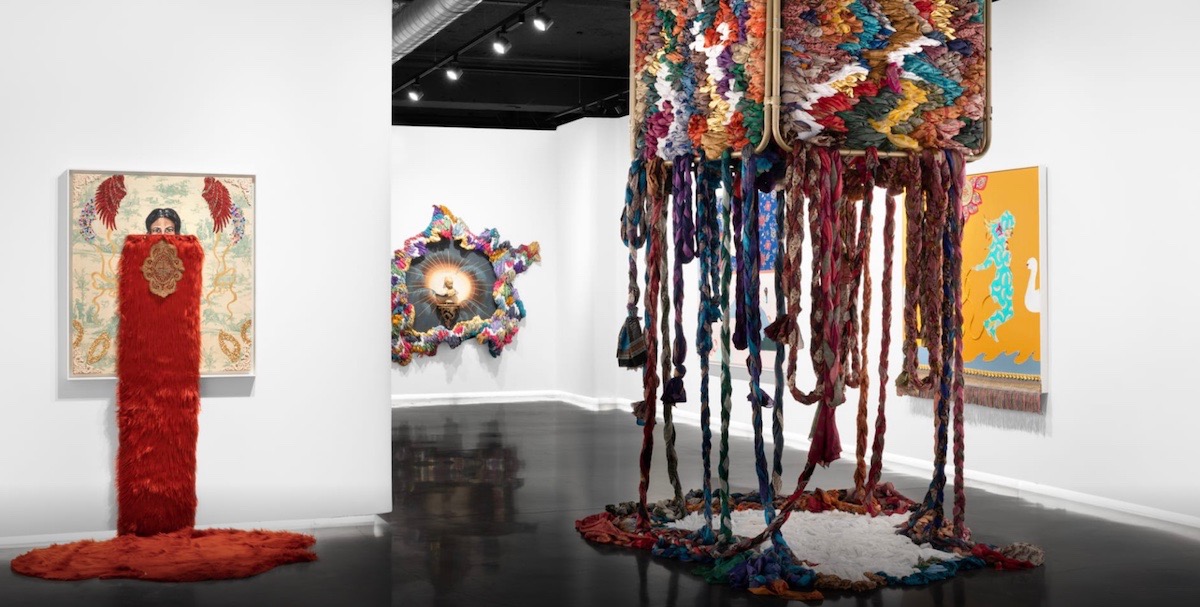Multimedia Indo- Caribbean artist Suchitra Mattai’s exhibition Monster (Unit London 11 January – 7 February) is a new body of work that explores the social, emotional and political significance of material-based practices about those who nd themselves culturally “othered” through displacement, migration or mental health challenges.
Born in Guyana and currently based in Denver in the United States, Mattai has previously lived in Canada, India, France, and various States across the US. The descendant of indentured labourers, her great grandparents, were brought to work on sugar plantations beginning in the late 19th Century from India.
Using a craft traditionally dismissed as “women’s work”, Mattai reminds us of its significance concerning “othered” communities: the disenfranchised, migrants, the historically silenced female and the mentally ill.
Mattai studied painting and sculpture and is now a multimedia artist; her embroidery works to honour the practices of her female ancestors and the craft techniques taught to her as a child by her grandmother, who was herself a seamstress. Incorporating found or pre-existing materials, fabrics and furniture, combined with the embroidery and needlework skills she initially learned as a child, defines her current practice. In pursuing what has traditionally been viewed as “low art”, Mattai follows in
the footsteps of the Godmother of feminist art, Judy Chicago. Chicago collaborated with a team of seamstresses to integrate needlework into her artworks since the late 1970s, culminating
in the now-legendary Dinner Party.
While Chicago seeded the concept of embroidery and ceramics into contemporary feminist art, Mattai too highlights othered narratives and the dark legacy of colonialism via the cultural significance of textiles and quilting. For example, history reminds us that under General Pinochet, when those who spoke out were tortured, imprisoned or murdered in Chile, it was the poverty-stricken women in the shanty towns of Santiago, many of whom had lost husbands and children, who gathered up scraps of fabric to tell their stories of loss and grief and alert the outside world to the reality of their lives. Meanwhile, the Bayeux Tapestry, picturing the Battle of Hastings, designed by a male and almost certainly stitched by women, depicts 632 men, more than 200 horses, 55 dogs, more than 500 other animals and birds, and six women. Made in the 1070s, emblematic of how works of this kind would often be treated throughout history: undervalued, dismissed, anonymous.
Material-based practices have been overshadowed by painting, sculpture, and architecture as an art form. A vivid feminine, feminist presence strongly imbues her work, which is unsurprising given that Mattai says she is particularly interested in excavating the buried stories of women.
With women having been historically dealt the most challenging circumstances and continuing to encounter and overcome numerous obstacles, Mattai deliberately focuses on highlighting female narratives, the ancestral thread and her stories in her body of work. Mattai’s personal experience of mental health challenges combined with a somewhat nomadic journey has fuelled her insight into society’s ‘others’, particularly immigrants and the mentally ill. “I always felt like I was Bipolar,” she rejects. “It just wasn’t talked about in my Indo-Caribbean childhood. I thought about retelling my own family’s story and the alienation that followed through to my mental health. I decided I wanted to create an exhibition that made space for these parallels.”

